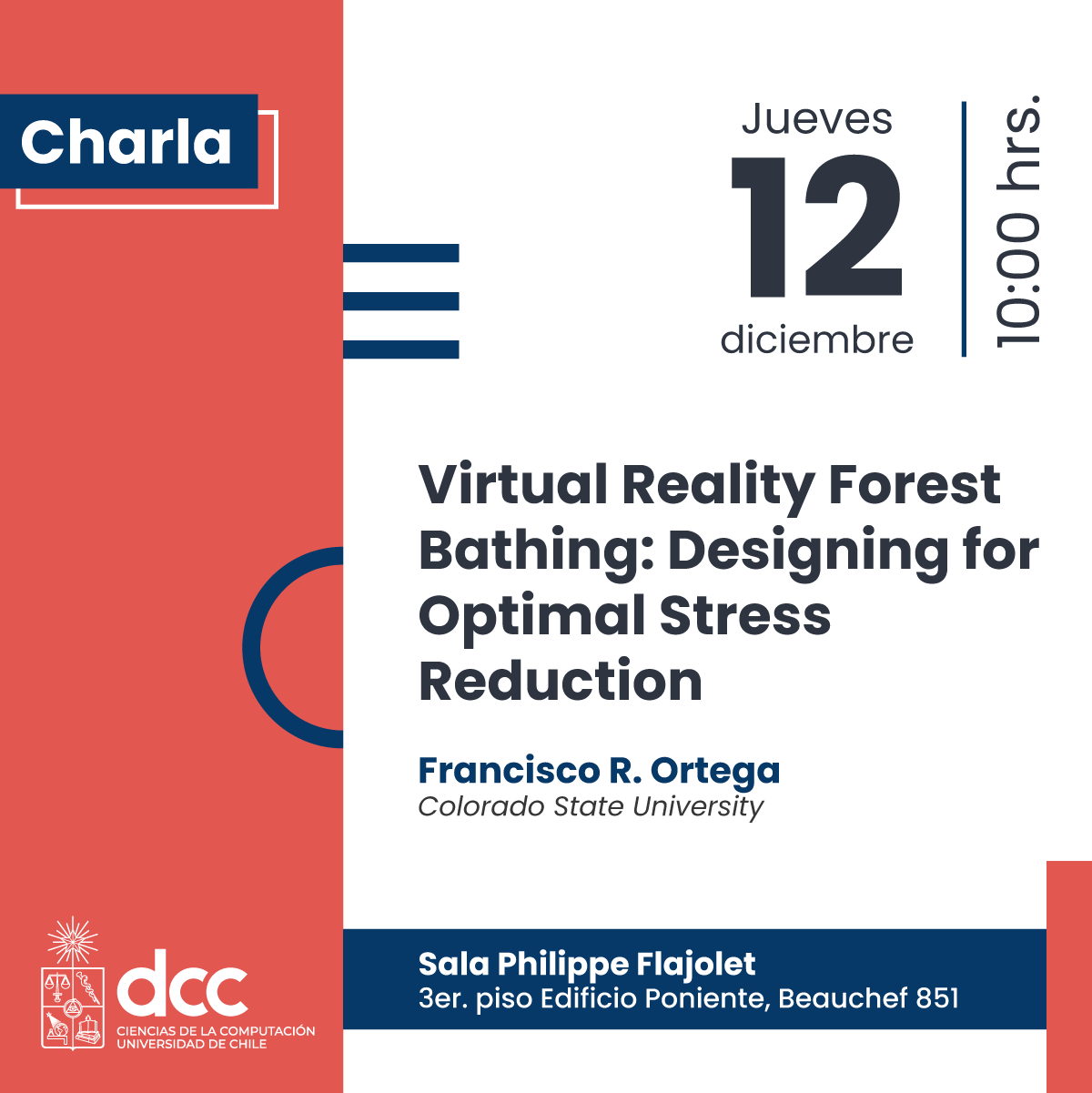Resumen: Forest bathing is the practice of sensory immersion in a natural environment for stress relief and mental resource restoration. Forest bathing offers many positive effects that can help people’s mental health; however, many people who are in the most need of stress reduction benefits do not have access to nature, such as people in hospitals, nursing homes, and large cities. Virtual reality (VR) has the potential to increase accessibility to the benefits of nature by delivering immersive nature simulations that provide similar benefits. To create an effective virtual nature environment (VNE), research needs to be conducted on the components of a nature environment that make forest bathing effective. Additionally, a key issue with creating VNEs is making them deployable on accessible, everyday VR headsets like the Oculus Quest 2. This talk will discuss the results from our experiments showing the potential of biomass, or living green nature, as an essential component for restorative effect. I will also include current findings and what's to come!
Bio: Francisco R. Ortega is an Associate Professor at Colorado State University (CSU) and has been Director of the Natural User Interaction lab (NUILAB) since Fall 2018. Dr. Ortega earned his Ph.D. in Computer Science (CS) in the field of Human-Computer Interaction (HCI) and 3D User Interfaces (3DUI) from Florida International University (FIU). He also held the Post-Doc and Visiting Assistant Professor position at FIU between February 2015 and July 2018. His research has focused on (1) multimodal and unimodal interaction (gesture-centric), which includes gesture elicitation (e.g., a form of participatory design), (2) information access effort in augmented reality (e.g., visual cues and automation bias), (3) AR notifications, and (4) stress reduction using virtual reality forest bathing. For multimodal interaction research, Dr. Ortega focuses on improving user interaction by (a) multimodal elicitation, (b) developing interactive techniques, and (c) improving augmented reality visualization techniques. The primary domains for interaction include general environments, immersive analytics, and VR sketching. His research has resulted in over 90 peer-reviewed publications, including books, journals, conferences, workshops, and magazine articles, in venues such as ACM CHI, ACM VRST, IEEE VR, IEEE TVCG, IEEE ISMAR, ACM PACMHCI, ACM ISS, ACM SUI, IEEE 3DUI, HFES, and Human Factor Journals, among others. Dr. Ortega has experience with multiple projects awarded by the government. For example, Dr. Ortega was a co-PI for the DARPA Communicating with Computers project. He is a PI for a 3-year effort for ONR titled Perceptual/Cognitive Aspects of Augmented Reality: Experimental Research and a Computational Model. He was recently awarded a new ONR grant titled “Assessing Cognitive Load and Managing Extraneous Load to Optimize Training.” The National Science Foundation and other agencies and companies have also funded him. This includes the NSF CAREER 2023 for microgestures and multimodal interaction. Since his tenure-track appointment at CSU in August 2018, Dr. Ortega has brought over 4.2 million dollars in external funding (with 3.7 million as principal investigator). Finally, Dr. Ortega is committed to diversity and inclusion, and his mission is to increase the number of underrepresented minorities in CS, rooted in his own experiences and from the time spent at FIU – the largest R1 Hispanic serving institution. His lab website is https://nuilab.org.
--
Comunicaciones DCC
